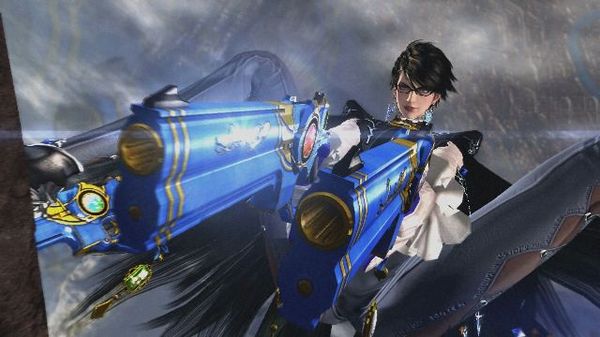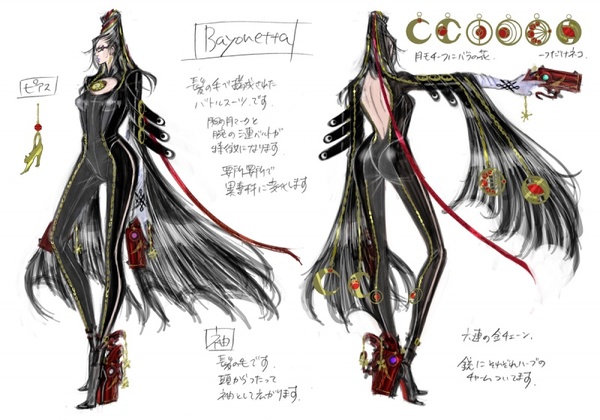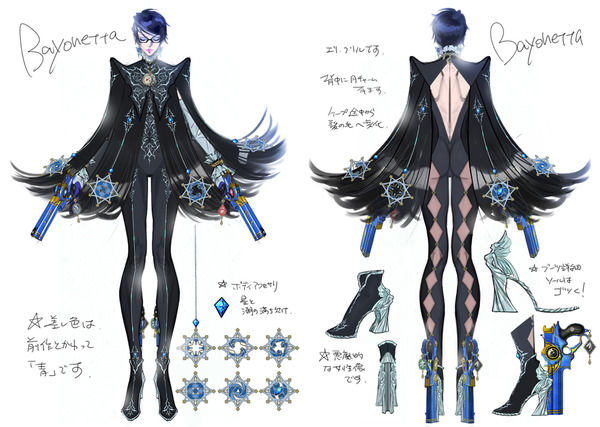I hereby call for an end to the phrase “male gaze” in all future videogame criticism.
It’s not only that most people use the phrase incorrectly, although that’s part of the problem—it’s more that the phrase already got debunked by feminist film theorists decades ago. “Male gaze” originally referred to an assumption that the camera, and the theoretical spectator, are assumed to be male. But not all men are straight—and not all camera-holders are men—nor are all spectators! In the 1987 article “Desperately Seeking Difference: Desire between Women in Narrative Cinema,” Film Studies and Women’s Studies Prof. Jackie Stacey points out that “the specifically homosexual pleasures of female spectatorship have been ignored completely” by the term “male gaze,” which results in a particularly reductive role for women: “the female spectator is offered only the three rather frustrating options of masculinisation, masochism or marginality.”
In other words, “male gaze” is a phrase that makes a lot of assumptions, and none of them make sense in the context of games. When we use this phrase, we assume the game’s developers are male; this is true most of the time, but not all of the time nowadays (thank goodness). We also pretend to know what “all” men might like to gaze at—women’s butts, apparently? I doubt that. We discount the interests of non-men entirely, since any enjoyment they might have is considered “unintentional” on the part of the creators, and therefore irrelevant.
That’s a load of bunk. And yet, critics have clung hard to the idea of the “male gaze” in games, perhaps in part because we’ve also been making lots of assumptions, over the years, about the “intended” audience of games. This makes no sense at all, though, given that games not only allow but encourage the player’s self-insertion into the narrative, inviting people of all sorts to walk a mile in someone else’s shoes.
Of course, many game developers do still presume that the player is straight, male, and interested in leering at ladies—and they may even choose to pander to these players’ eyes only. However, whenever developers include cheesecake in games while also allowing the player to inhabit the body of a woman, unintentional subversions often occur, no matter what the creators’ “intentions” may have been.
Woman-centric games, particularly those with sexualized main characters, often attempt to undermine the agency of their protagonists by inviting the player to laugh at her rather than sympathize with her. Juliet Starling of Lollipop Chainsaw, for example, is insulted, mocked and sexually harassed by the men around her in-game, and she seems to have internalized much of this shame: she admits to feeling insecure about her physical appearance, and she often apologizes and downplays her own superpowers. The playable heroines of Dragon’s Crown also seem to be framed as objects of derision rather than self-identification; the game’s depictions of damsels in bondage, who moan if the player clicks on them, seem designed to fulfill a fantasy as well.
A lot of people try to put Bayonetta into the same category as these other games. I don’t blame them; I, too, had a lot of wary expectations about the first Bayonetta back in 2010. At that time, I barely understood feminism—let alone the concept of “sex positivity”—and I was still getting over a lifetime of internalizing that all feminine signifiers stand for “weakness.” In the run-up to the game’s release, I saw billboards of Bayonetta and her gun-heels gracing train platforms all over town, and I cringed, assuming she’d be yet another brainless bimbo who’d jiggle her boobs, passively purse her lips in vulnerable moments, and invite a presumed-male-and-straight player to fantasize about her.
The resultant game was decidedly not that—nor was its sequel—but so many other games have offered us that image that I can’t be too surprised to see other game critics writing Bayonetta off as yet another in a long line of boob-jiggling bouncy castle games. We’ve all been primed to accept that a fictional lady with big boobs is going to be a Dead Or Alive bimbo, and so we don’t look much further than the picture on the package. If games don’t offer us complex heroines, then we apparently stop looking for them.
Part of the bias against Bayonetta is due to our own anti-sex baggage as a society (at least, here in the States)—but an even bigger part, I think, is that videogame criticism just isn’t ready to talk about Bayonetta. You can tell, given critics’ frequent usage of the phrase “male gaze,” that we’re still a little bit far behind when it comes to understanding feminist media criticism, and the concept of sex-positivity in general might be a little too advanced in level for game criticism.
What would a game with a female heroine who has actual sexual agency even look like? Would we know it if we saw it? Would we be able to recognize it, if we put it on a shelf between Dante’s Inferno and Killer Is Dead? Am I ever going to stop being annoyed when I see supposedly progressive male games critics arguing on Twitter about which sexually empowered women in games do or do not make them feel uncomfortable? FYI, men? I’m pretty sure Bayonetta doesn’t care if you like it. And I know Hideki Kamiya doesn’t.
Speaking of Kamiya, I know what you’re all thinking: Bayonetta wasn’t designed to be a sex-positive feminist heroine. There was no intention to do that, on the part of her creators. I’ll entertain this argument for a moment, but only because the story of Bayonetta’s conception is so gosh darn delightful.
Bayonetta has two oft-cited “creators”: Hideki Kamiya and Mari Shimazaki. Of course, given the team-based nature of game design, Bayonetta has far more “creators” than just these two, but human beings love dichotomies. So, urban legend has it that Kamiya’s and Shimazaki’s dueling influences make up the push and pull of Bayonetta’s personality.
If I wanted to argue that Bayonetta was made to be a sex object for a man, I’d point to Kamiya’s quotes. If I wanted to argue Bayonetta is a power fantasy for a woman, I’d point to Shimazaki’s writing. But, of course, Bayonetta is both—and then some.
Kamiya directed both Bayonetta games, as well as the Devil May Cry series, which features a leather-clad, corseted deuteragonist named Trish, and The Wonderful 101, which includes Wonder Pink, a whip-wielding Transylvanian heroine. (So, Kamiya clearly has a “type.”) Kamiya ascribes to an MST3K-esque “It’s just a show, [you] should really just relax” mentality when it comes to interpretations of Bayonetta herself. Too bad, Kamiya—I can’t help it! Try to take it as a compliment, though, won’t you?
Mari Shimazaki is often put forward as a counter-point to Kamiya’s alleged “male gaze” design motivations, mostly because she is a woman, but also because she has described her design of Bayonetta as a subversion of typical “action girl” clichés: “When a female character appears in an action game, her limbs often seem thin and short. That is why I tried to make [Bayonetta] more appealing as an action game character by adjusting her proportions and extending her limbs.” Indeed, Bayonetta’s formidable height is part of what makes her less conventionally attractive than other diminutive, “cute” videogame heroines.
Shimazaki went on to write that Bayonetta’s glasses were Kamiya’s idea, theorizing, “I think it is just because he likes girls with glasses.” Shimazaki also managed to sneak a pair of glasses onto every other character design in the game: “I figured if he likes glasses so much, why wouldn’t I give him all the glasses he could ever want?”
This playful back-and-forth on the design team indicates a gentle acknowledgement of Kamiya’s various fetishes, including those he harbors about his own characters. I’m trying to resist the temptation to theorize too much about Kamiya’s personal bent towards women who wear stilettos, corsetry and librarian glasses, since that seems a bit rude, but I’m not the only one who’s picked up on the signals.
After all, Kamiya himself frequently describes the games’ central theme as “sexiness,” and also his own protagonist as “sexy” or “hot.” Clearly, he’s into his heroine—but does that mean that this game caters to a typical “male gaze”? It caters to Kamiya’s gaze, to be sure—but I’m not sure Kamiya’s fetishes match up with what’s “typically” considered attractive—which, of course, is exactly why the term “male gaze” turns out to be thoroughly unhelpful. For a laugh, enjoy this 2009-era GameFAQs forum thread in which men disagree as to whether Bayonetta’s “ridiculous” proportions make her “freakish” or “hot.” Even now, Bayonetta is one of the only dominatrix-themed heroines about which I frequently see these words: “scary,” “terrifying,” and “intimidating.” That’s as it should be, in my opinion.
The reason why I’m all too willing to forgive Kamiya’s fetishization of Bayonetta is because it’s a fetish I happen to share, albeit from the other direction: playing as Bayonetta taps into an interest that I almost never see reflected in games at all, or at least not in a way I find remotely palatable or tolerable. Other famous femme dominatrix characters of videogames past include Soul Calibur’s Ivy and Final Fight’s Poison, the latter of whom recently joined the cast of Ultra Street Fighter 4, complete with her riding crop and handcuffs. Both Ivy and Poison have their own cringe-worthy “authorial intent” stories, but they share more than a little in common with Bayonetta: in addition to the dominatrix imagery, all three women have very long limbs and a passion for punishing fools. That said, if you think the “male gaze-y” shots of Bayonetta’s butt are bad, perhaps you haven’t played a fighting game in a while? Bayonetta’s detractors would be clutching their pearls past the breaking point to see how Ultra Street Fighter 4 lovingly lingers on Poison’s backside.
I’ve become desensitized to such imagery in part because the ability to play as a woman—especially one with a dominatrix penchant—often overrides any reservations I might have about how the camera feels towards her. Regardless of how I may feel about Ivy’s ever-growing cup size and her ever-shrinking outfits, I feel some sense of kinship with her. Same goes for Poison, a character who has a history of her own creators acting condescending about her not because of her dominatrix signifiers, but rather because she is trans (her writers, thankfully, started working with GLAAD to repair their past errors on this score, but the fighting game community never forgets, and transphobic humor still abounds whenever Poison comes up).
Bayonetta has often been interpreted by fans as a queer woman (her relationship with Jeanne seems a bit more than “just friends”), and yet other fans read her as a trans woman —but, of course, none of these fan interpretations have been canonically confirmed. Even the supposed femme-domination kink that I take for granted in these three characters has never been overtly stated—it’s simply implied by the aesthetics and framing of their outfits and one-liners. Just as there are very few queer and trans characters who are “out” in games (and the few who are often get mocked for it), so too are there very few “out” dominatrix kinksters—although you’d think that would have come first!
Obvious statement incoming: portrayals of sexually active women characters in games nearly always feature them in a submissive role (e.g. Lollipop Chainsaw, Dragon’s Crown, Killer Is Dead, Mortal Kombat 9’s weird obsession with “battle damaging” its heroines clothes—the list goes on). Here’s another (hopefully) obvious statement: I see nothing wrong with that, if that’s what you’re into. Regardless, though, there are very few women characters in games who own their sexuality without being punished or mocked for it (often by their own creators), and there is so little awareness among game developers of what “sex positivity” might look like that it seems too much for me to hope that a good BDSM narrative could ever happen in a mainstream game without coming across as exploitative.
I’ve seen exceptions happen outside of the “mainstream” games market, as in Merritt Kopas’s Consensual Torture Simulator and in Soha Kareem’s reProgram. Indie titles often succeed at trickier topics, since a small team—especially a one-woman team!—can more easily navigate the slippery slopes of sex-positive BDSM stories. But it can also be done, or at least attempted, on a larger scale: Access Games’ Drakengard 3 portrays a dominatrix protagonist who spends the game collecting a harem of male sex toys; this type of “power fantasy” plays so far against type that I almost don’t know how to classify it, other than to say it’s absolutely worth watching a cut-scene mash-up at least once (the game’s tedious combat mechanics can’t earn this game a caveat-free recommendation from me). However, Drakengard 3’s heroine, Zero, treats her male conquests so poorly that one wonders to what extent its creators were playing the concept of a femme dominatrix for laughs, rather than as a true power fantasy that a female player might have. I just can’t tell whether the game is “on my side.”
If I find something to love about a game, some aspect that makes me feel empowered, it’s nearly always due to my own personal interpretation or re-reading, not due to an intended message on the part of the creators—which is a big part of why I just can’t be bothered about “authorial intent,” most of the time. More often than not, a power fantasy featuring a female character is played up as comedic, rather than something that someone might actually find sexy. It’s a difficult line to walk, especially given that it isn’t a fetish that’s considered normal—at least, not when the dominator is feminine and the submissive is masculine. We have normalized the reverse, of course, but it’s surprisingly hard to find examples of femme doms in games that aren’t laughed at or leered at by the camera, or taken down a notch in some way by the narrative or their own creators.
Bayonetta isn’t exactly an exception to this problem. Bayonetta 2 is a comedy game; the camera loves Bayonetta’s butt; Bayonetta herself often appears to be “performing” for someone, by posing in a sexual sense, but it’s never entirely clear towards whom: the player, advancing enemies, or herself? The reason this distinction doesn’t matter to me, though, is because the story doesn’t attempt to humiliate Bayonetta. She never gets tied up or restrained; she never gets “put in her place”; she never gets smacked around by a Big Bad Man in an inexplicable cut-scene. Her dominance goes unquestioned throughout the game, which in and of itself is so unexpected and refreshing that I can forgive the fact that the camera assumes I’m very interested in her butt crack. Even the fact that the camera is trying to sexualize Bayonetta feels like a subversion of sorts, given that she as a character is one who refuses to be owned or manipulated; she is the essence of unavailable. You can look, but you can’t touch—not without your mistress’s permission!
Ultimately, I just don’t care what straight men think of Bayonetta. If she’s not your kink, that’s fine. Not everybody likes to be stepped on. But to dismiss her entire game as a product of “male gaze” seems like an unkind oversimplification as to who might be doing the “gazing”—let alone the identifying—and perhaps evidence that gaming desperately needs a new phrase to describe the complex interlocking of factors that occur when players identify with a character. We don’t just get invited to watch Bayonetta, we also inhabit her. When I play, Bayonetta is me, and the camera’s glances are just the “sub gaze”—the male submissive’s gaze. Bayonetta holds all the cards.
Hyper Mode is an occasional column by Paste’s assistant games editor Maddy Myers. She tweets @samusclone and co-hosts a weekly gaming podcast called Isometric on the 5by5 Network.


